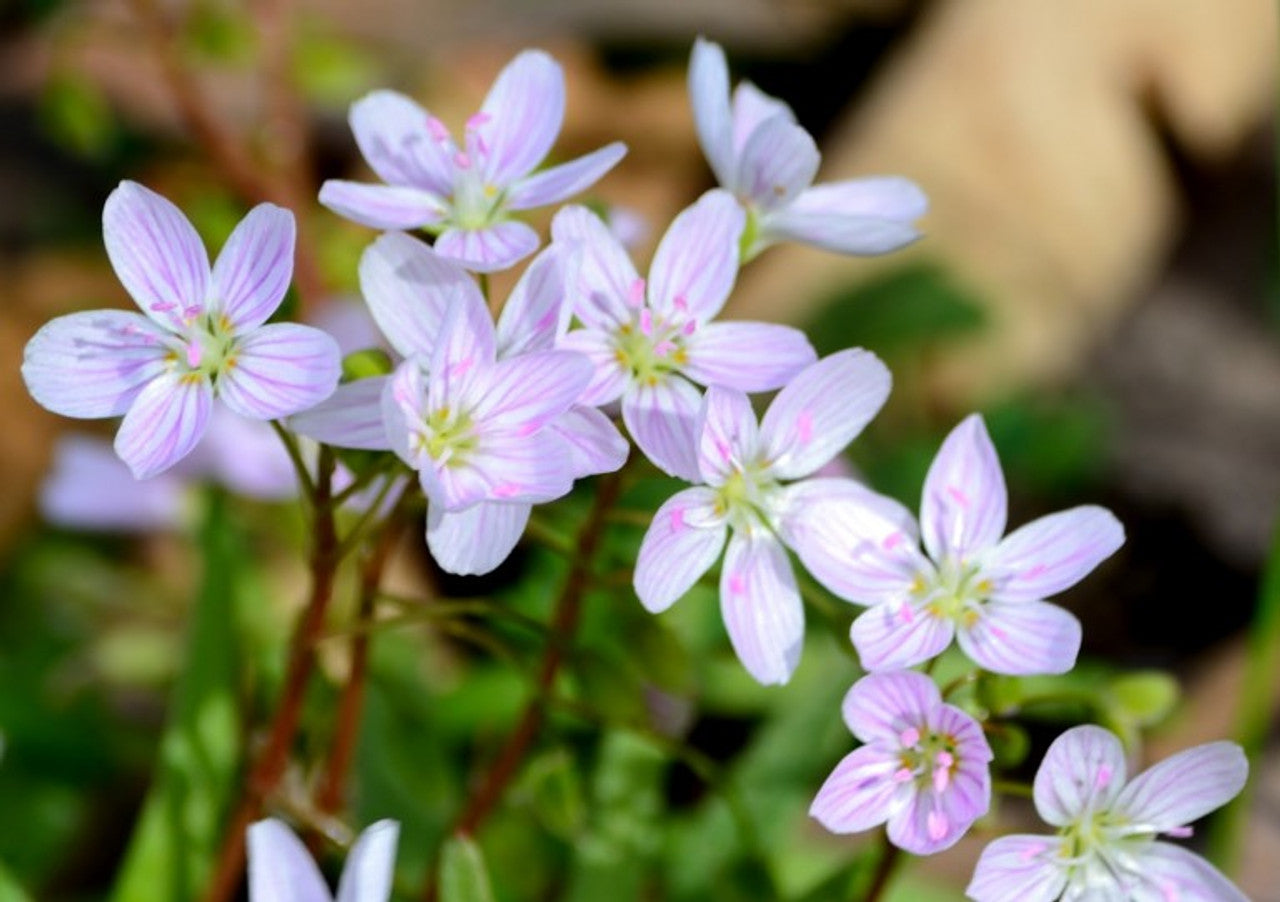
Claytonia Virginica
The Spring Beauty (Claytonia virginica) is a native perennial wildflower well-known for its small and attractive flowers that bloom in early spring in the woodlands of eastern North America. Gardeners appreciate this species for its early-season color, its delicate blossoms, and its ability to naturalize in shady areas to form drifts of flowers that carpet the ground.
Spring Beauty is a low-growing plant, rarely exceeding 4 inches (10 cm) in height. Its leaves are thin and grass-like and emerge from small, tuberous roots in early spring. The stems are slender and rise only a few inches above the ground. Each stem ends in a small, star-shaped flower with typically five pink or white petals. The petals may also have darker pink stripes running from the center of the flower outward, giving the blooms a subtle striped appearance. The flowers of Spring Beauty attract early-season pollinators such as bees and small flies, providing an important food source when few other plants are in bloom.
Spring Beauty prefers partial to full shade and grows best in rich, well-draining soil that is high in organic matter. It is native to deciduous forests, floodplains, and woodland edges, and is well-suited for woodland gardens, shaded borders, or naturalized areas. The plant spreads slowly by underground tubers and occasional self-seeding, eventually forming soft drifts of flowers that create a naturalized effect.
Spring Beauty is a low-maintenance plant that requires little care once established. After flowering, the foliage will slowly die back, allowing for later-season woodland wildflowers such as trilliums, ferns, or hostas to fill in the space. This seasonal appearance and disappearance of Spring Beauty makes it an excellent choice for layering in garden designs without overcrowding summer perennials.
The Spring Beauty is a beloved native plant among gardeners for its charming appearance, early-season blooms, and ecological value. Its ability to form a carpet of soft pink and white flowers in shaded areas makes it an excellent choice for naturalized woodland gardens, while its low-growing habit and minimal care requirements make it a great choice for gardeners of all experience levels.





